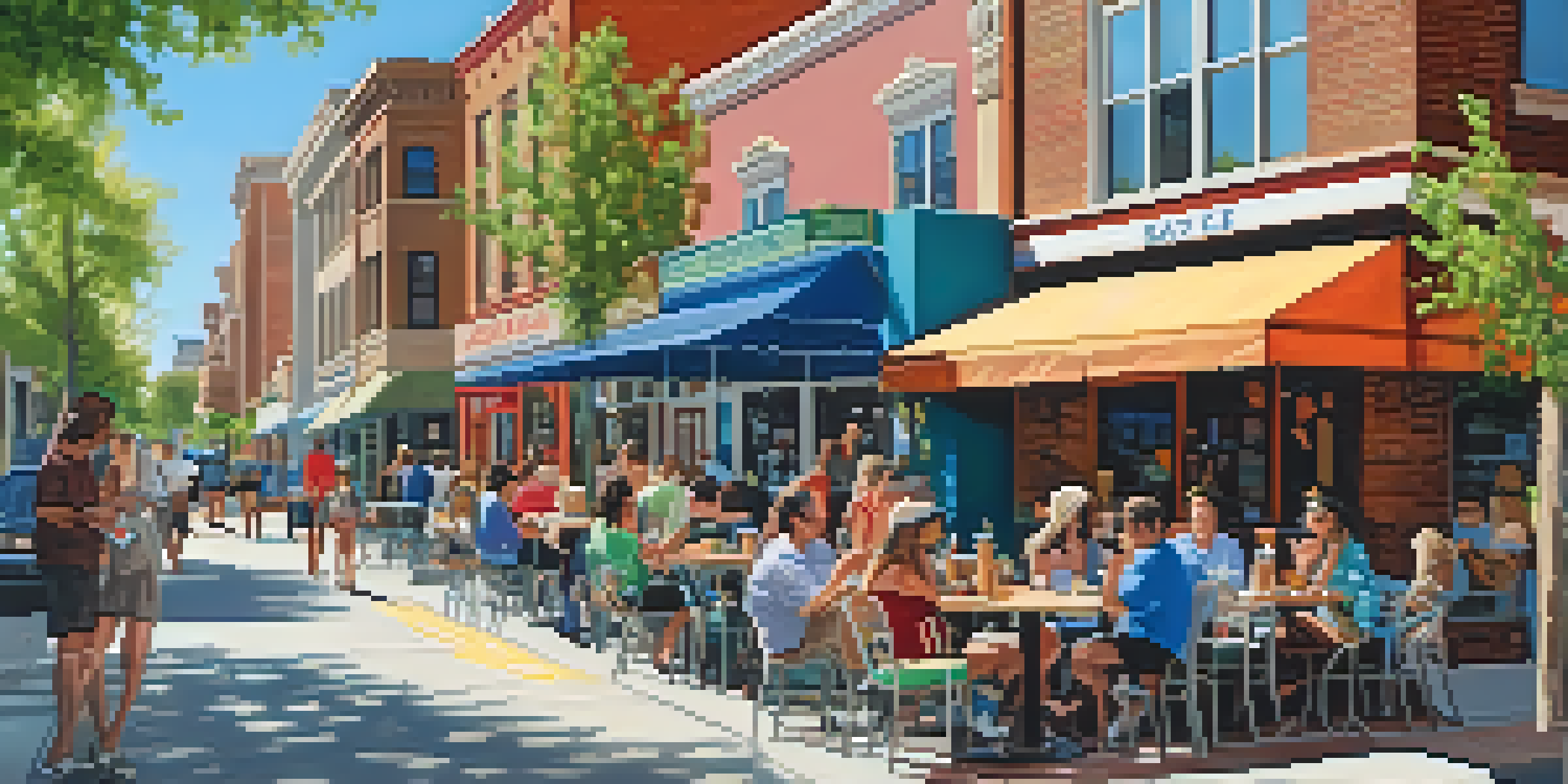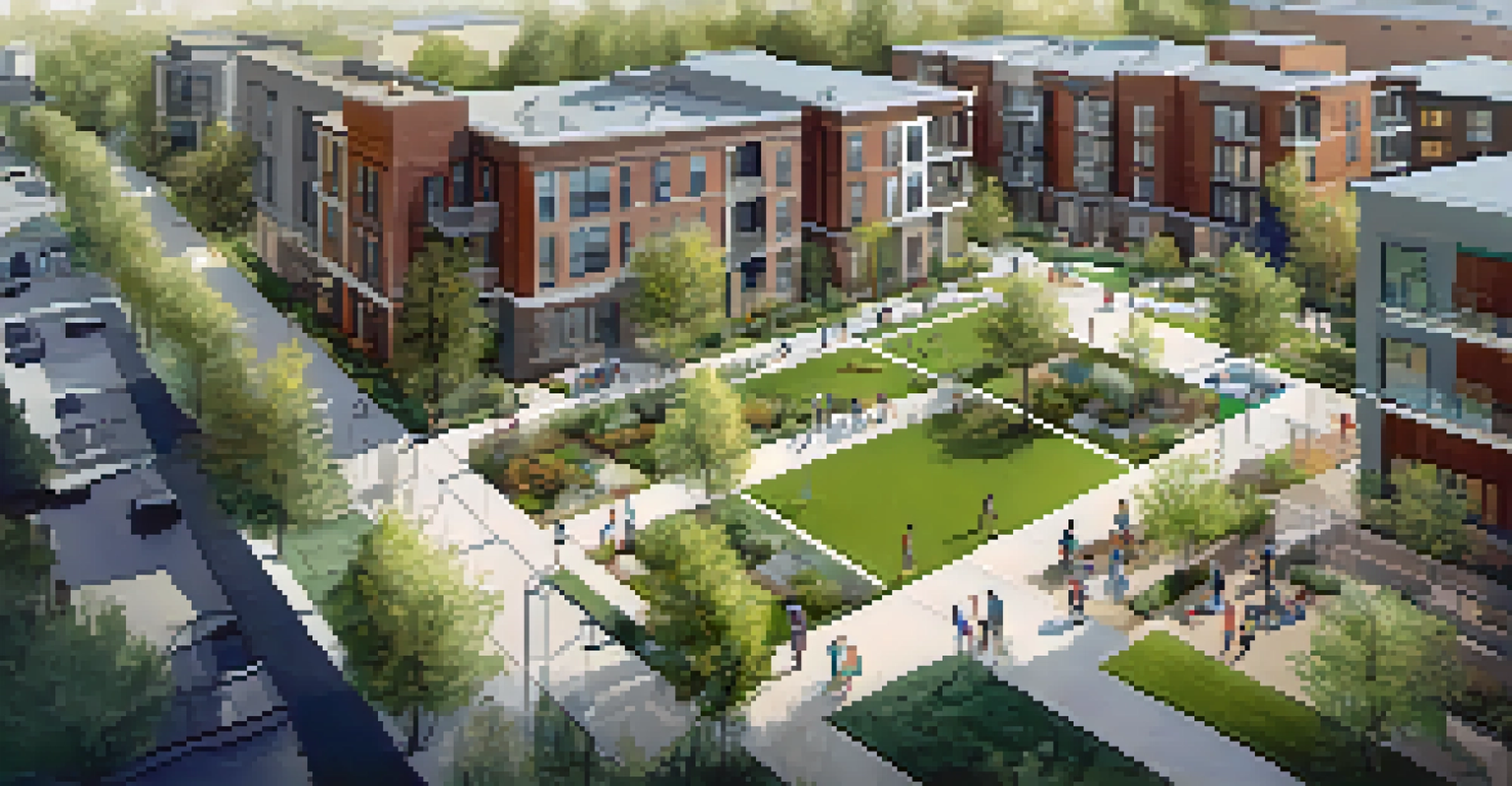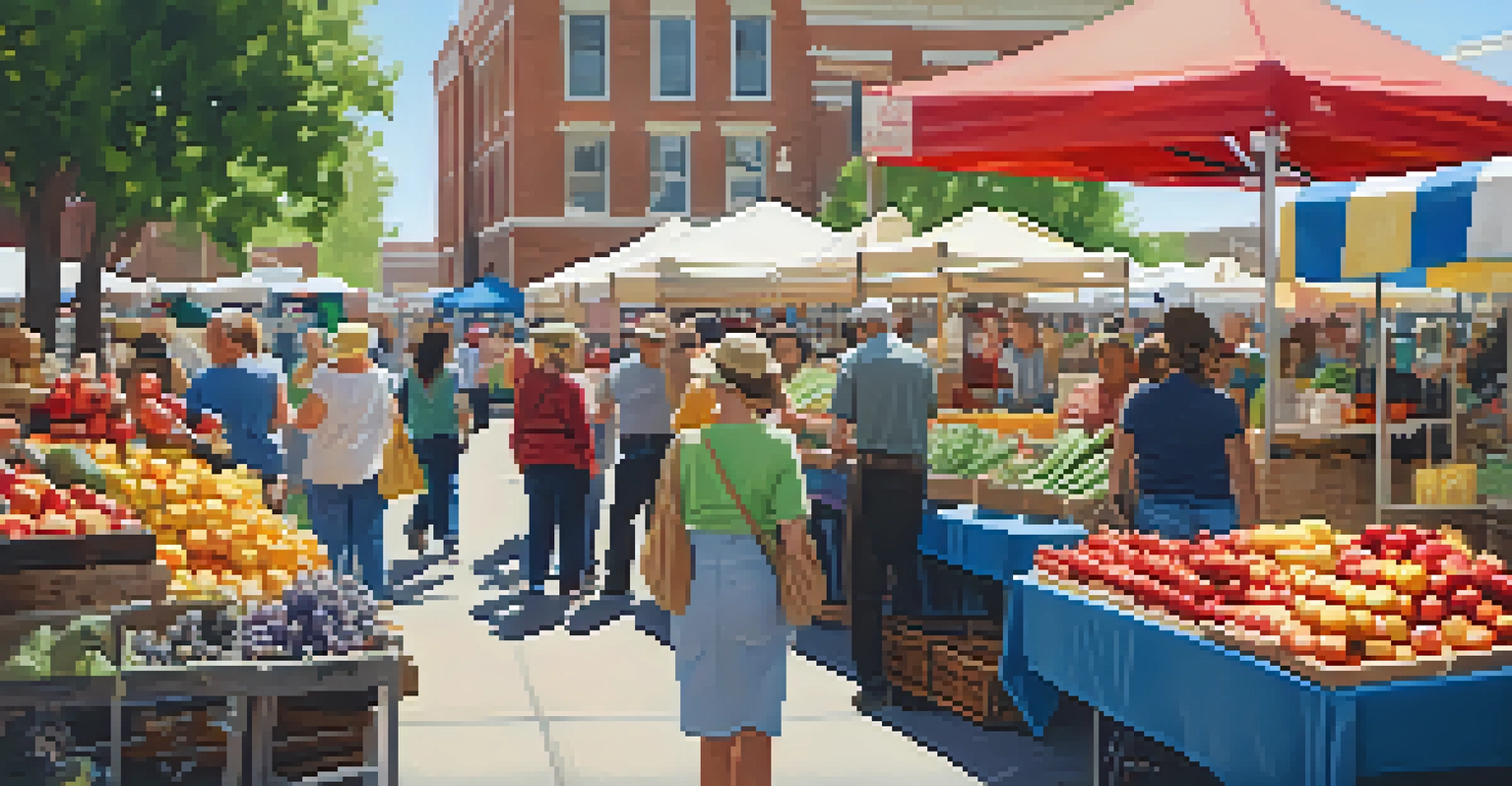Neighborhood Developments Shaping Salt Lake City Real Estate

Emerging Neighborhoods: A New Era for Salt Lake City
Salt Lake City is experiencing a renaissance, with emerging neighborhoods reshaping the urban landscape. Areas that were once overlooked are now undergoing significant revitalization, attracting new residents and businesses alike. This influx not only boosts the local economy but also enhances the overall quality of life in the city.
The greatness of a community is most accurately measured by the compassionate actions of its members.
For instance, neighborhoods like the Granary District are seeing a surge in mixed-use developments, combining residential, retail, and cultural spaces. This transformation is making these areas more vibrant and appealing to younger demographics, particularly millennials and Gen Z, who seek walkable communities with easy access to amenities.
As these neighborhoods evolve, they offer unique opportunities for real estate investors. Whether it’s redevelopment projects or new construction, the potential for growth is substantial, making Salt Lake City an attractive market for those looking to capitalize on these transformative changes.
The Role of Local Businesses in Neighborhood Growth
Local businesses play a crucial role in the development of neighborhoods within Salt Lake City. As new residents move in, they bring fresh demands for services and amenities, prompting entrepreneurs to set up shop. Cafés, boutiques, and fitness studios are popping up, creating a sense of community and enhancing the appeal of these areas.

Take, for example, the burgeoning food scene in neighborhoods like Sugar House. New restaurants and food markets not only cater to local tastes but also attract visitors from other parts of the city. This culinary evolution helps solidify the neighborhood’s identity and fosters a vibrant atmosphere that residents love.
Revitalization of Salt Lake City
Emerging neighborhoods in Salt Lake City are attracting new residents and businesses, enhancing the local economy and quality of life.
Moreover, the collaboration between local businesses and city planners can lead to more sustainable and thoughtful development. By prioritizing small businesses, Salt Lake City can ensure that growth benefits the community as a whole, making neighborhoods more resilient and connected.
Public Transportation Enhancements Boost Neighborhood Appeal
Improvements in public transportation are a game changer for Salt Lake City’s neighborhoods. With the expansion of the TRAX light rail system and new bus routes, residents are enjoying greater accessibility to different parts of the city. This connectivity not only makes commuting easier but also encourages people to explore new neighborhoods.
Sustainability is about ecology, economy, and equity.
For instance, the recent addition of the S-Line streetcar has opened up areas like South Salt Lake to new residents and businesses. As a result, neighborhoods that were once considered remote are now seen as desirable places to live due to their easy access to downtown and other key areas of interest.
Enhanced public transportation options also appeal to eco-conscious residents who prefer not to rely on cars. This shift promotes a more sustainable lifestyle, aligning with the values of many who are moving to Salt Lake City, further driving demand for real estate in these well-connected neighborhoods.
Green Spaces: A Priority for New Developments
The integration of green spaces in neighborhood developments is becoming a top priority in Salt Lake City. Urban parks, community gardens, and green rooftops are not just attractive features—they promote health and well-being. As more residents prioritize outdoor spaces, developers are responding by incorporating these elements into their projects.
For example, the new developments in the 9th and 9th area include parks and recreational spaces that encourage outdoor activities and community gatherings. These green spaces create a sense of belonging and enhance the quality of life, making neighborhoods more inviting.
Local Businesses Drive Growth
The rise of local businesses in Salt Lake City neighborhoods fosters community connections and meets the demands of new residents.
Additionally, green spaces can increase property values, making them a smart investment for developers. Buyers are increasingly willing to pay a premium for homes near parks and recreational areas, understanding the long-term benefits of living in a community that values nature.
The Impact of Tech Companies on Local Real Estate
The influx of tech companies into Salt Lake City has significantly impacted the local real estate market. As these companies establish offices and hire new talent, nearby neighborhoods are experiencing rapid growth and increased demand for housing. This trend is transforming the city into a tech hub, attracting professionals from across the country.
Neighborhoods like the Silicon Slopes area are witnessing a boom in both residential and commercial real estate. New apartment complexes and office spaces are being built to accommodate the growing workforce, contributing to a dynamic urban environment that fosters innovation and collaboration.
However, this rapid development also raises concerns about affordability. As demand for housing increases, so do property prices, making it essential for city planners and developers to strike a balance between growth and maintaining the character of the community.
Community Engagement in Shaping Neighborhoods
Community engagement is vital in shaping the future of Salt Lake City neighborhoods. Residents are increasingly taking an active role in the planning process, voicing their opinions on development projects and community needs. This grassroots involvement ensures that developments reflect the desires and values of those who live there.
For instance, public forums and workshops have become common, allowing residents to collaborate with city planners and developers. This dialogue is essential for creating spaces that fit the community's unique character while addressing concerns like gentrification and accessibility.
Public Transport Enhances Appeal
Improvements in public transportation are making once-remote neighborhoods more desirable by increasing accessibility and promoting sustainable living.
By fostering this sense of ownership, neighborhoods can evolve in a way that honors their history while embracing new opportunities. It empowers residents to advocate for sustainable and equitable growth, ultimately leading to healthier, more vibrant communities.
The Future of Salt Lake City Real Estate
Looking ahead, the future of Salt Lake City real estate is bright, thanks to the ongoing neighborhood developments. These changes are not just about construction; they reflect a deeper shift in how residents want to live, work, and play. As the city continues to grow, it becomes increasingly vital to adapt to these changing needs.
With a focus on sustainability, community engagement, and technological advancement, Salt Lake City is poised to become a model for urban living. Neighborhoods that prioritize green spaces, local businesses, and public transportation will likely attract more residents and investors in the years to come.

Ultimately, the success of these developments will depend on collaboration among developers, city officials, and community members. By working together, they can ensure that Salt Lake City remains a vibrant, inclusive place for generations to come.